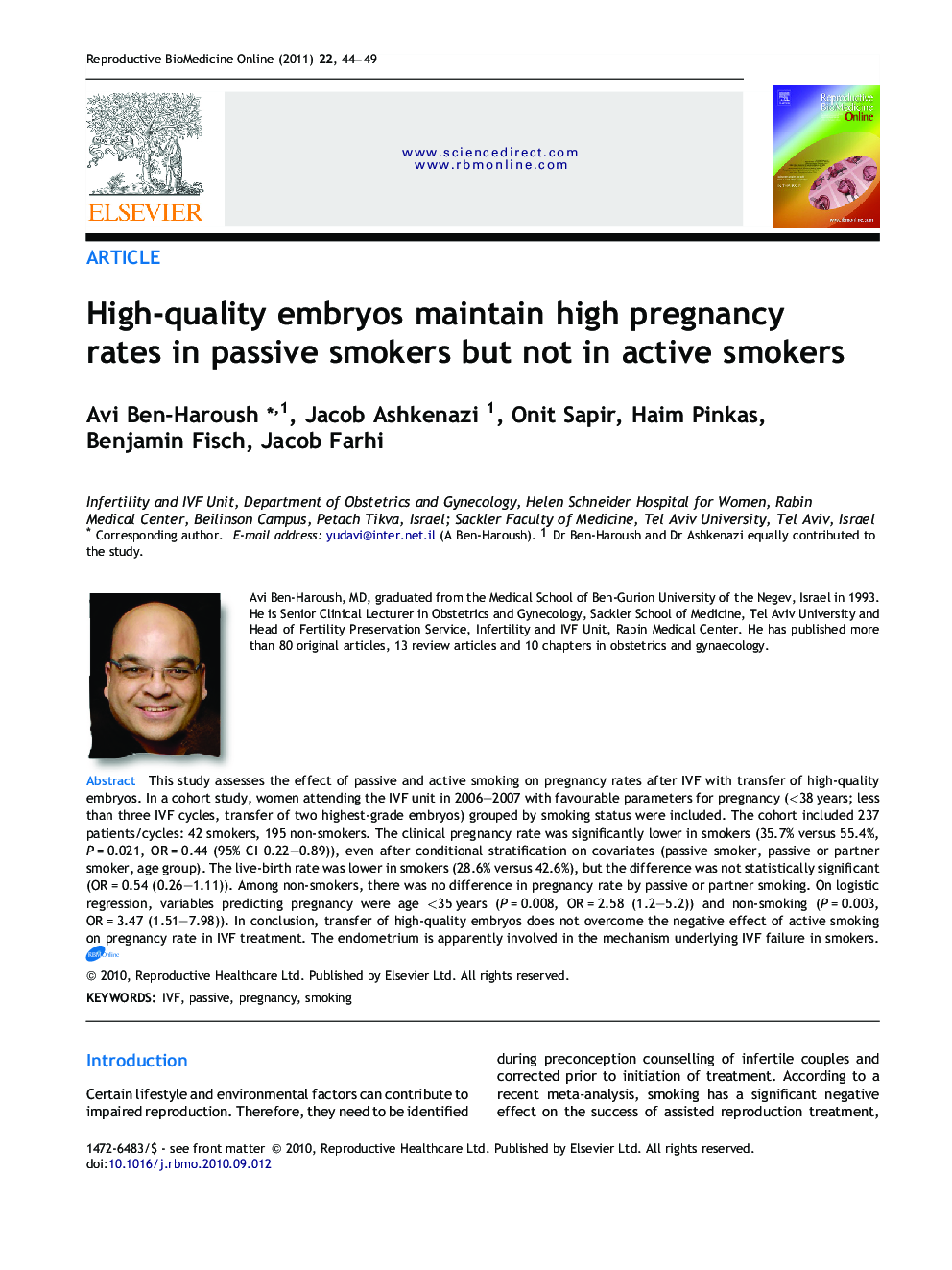| Article ID | Journal | Published Year | Pages | File Type |
|---|---|---|---|---|
| 3971808 | Reproductive BioMedicine Online | 2011 | 6 Pages |
This study assesses the effect of passive and active smoking on pregnancy rates after IVF with transfer of high-quality embryos. In a cohort study, women attending the IVF unit in 2006–2007 with favourable parameters for pregnancy (<38 years; less than three IVF cycles, transfer of two highest-grade embryos) grouped by smoking status were included. The cohort included 237 patients/cycles: 42 smokers, 195 non-smokers. The clinical pregnancy rate was significantly lower in smokers (35.7% versus 55.4%, P = 0.021, OR = 0.44 (95% CI 0.22–0.89)), even after conditional stratification on covariates (passive smoker, passive or partner smoker, age group). The live-birth rate was lower in smokers (28.6% versus 42.6%), but the difference was not statistically significant (OR = 0.54 (0.26–1.11)). Among non-smokers, there was no difference in pregnancy rate by passive or partner smoking. On logistic regression, variables predicting pregnancy were age <35 years (P = 0.008, OR = 2.58 (1.2–5.2)) and non-smoking (P = 0.003, OR = 3.47 (1.51–7.98)). In conclusion, transfer of high-quality embryos does not overcome the negative effect of active smoking on pregnancy rate in IVF treatment. The endometrium is apparently involved in the mechanism underlying IVF failure in smokers.According to a recent meta-analysis, smoking has a significant negative effect on the success of assisted reproduction treatment, resulting in a low live-birth rate per cycle. The mechanisms that account for this phenomenon are still unknown, although researchers suggest that both the qualities of the oocytes and the uterus/endometrium play an important role. We assessed the effect of passive and active smoking on pregnancy rates after IVF with transfer of high-quality embryos. In a cohort study, women attending the IVF unit in 2006–2007 with favourable parameters for pregnancy (<38 years, less than three IVF cycles, transfer of two highest-grade embryos) grouped by smoking status were included. The cohort included 237 patients/cycles: 42 smokers, 195 non-smokers. The clinical pregnancy rate was significantly lower in smokers (35.7% versus 55.4%, P = 0.021, OR = 0.44 (95% CI 0.220–0.89)), even after conditional stratification on covariates (passive smoker, passive or partner smoker, age group). The live-birth rate was lower in smokers (28.6% versus 42.6%), but the difference was not statistically significant (OR = 0.54 (0.261–0.11)). Among non-smokers, there was no difference in pregnancy rate by passive or partner smoking. On logistic regression, variables predicting pregnancy were age <35 years (P = 0.008, OR = 2.58 (1.25–0.2)) and non-smoking (P = 0.003, OR = 3.47 (1.517–0.98)). In conclusion, transfer of high-quality embryos does not overcome the negative effect of active smoking on pregnancy rate in IVF treatment. The endometrium is apparently involved in the mechanism underlying IVF failure in smokers.
